This post may contain affiliate links. Please read my privacy policy.
Cassava is a starchy root. This cassava cake is coated with shredded coconut. It's a Malaysian kuih recipe. It's sweet, dainty and delicious!
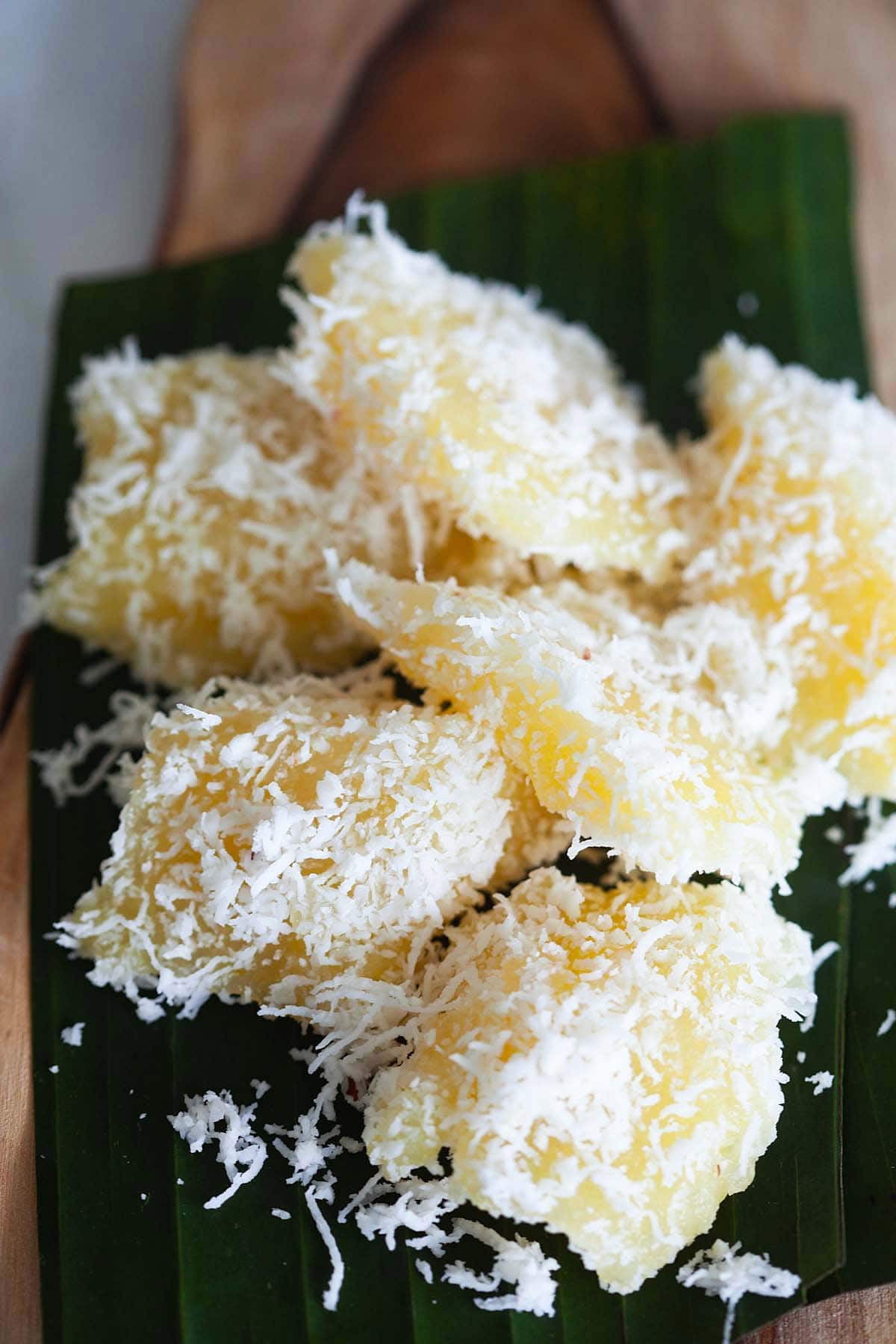
Cassava
What is cassava? It is a woody shrub found in South America, tropical and subtropical regions.
It has an edible root which is starchy, fibrous and packed of carbohydrates. It is called yuca in the United States.
In Southeast Asian countries, for example: Malaysia, it is made into cassava cake. The cake is called “kuih bingka ubi” and great with coffee.
Kuih is a local term for bite-sized sweet cakes and served in the morning or as an after a sweet dessert.
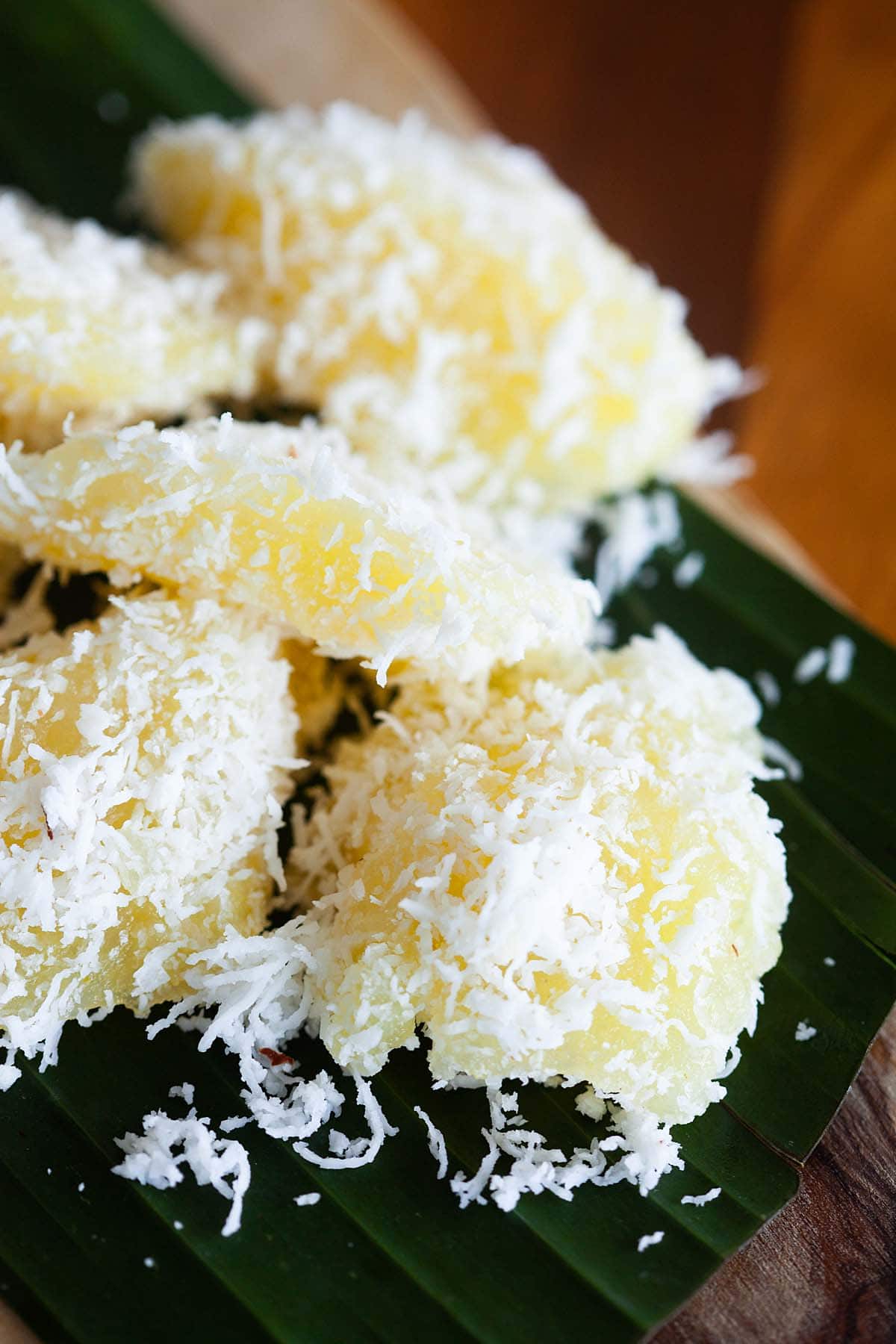
Cassava Cake
In home kitchen, you can make the recipe by mixing grated cassava, sugar, coconut milk, water, potato starch and salt until well combined.
This recipe is laborious and takes a long time to make from start to finish.
In the old days, this delicacy is hand made and everything is made from scratch.
Next, steam the mixture in a steamer until it firms up and cooked.
Finally, cut the cake into bite-sized pieces and coat evenly with the shredded coconut before serving.
Frequently Asked Questions
No, the main ingredient is the root. The flour or starch is not a substitute for this recipe.
You can use the starchy root to make a variety of recipes, for example: chips, bread, tortilla, etc.
The plant and leaves are not edible. The root is edible and healthy. It’s a popular ingredient in South America and Southeast Asia.
In the United States, it’s very hard to find fresh cassava. However, you can find frozen cassava in Asian stores.
It is packaged in a plastic bag and grated.
This recipe is only 495 calories per serving.
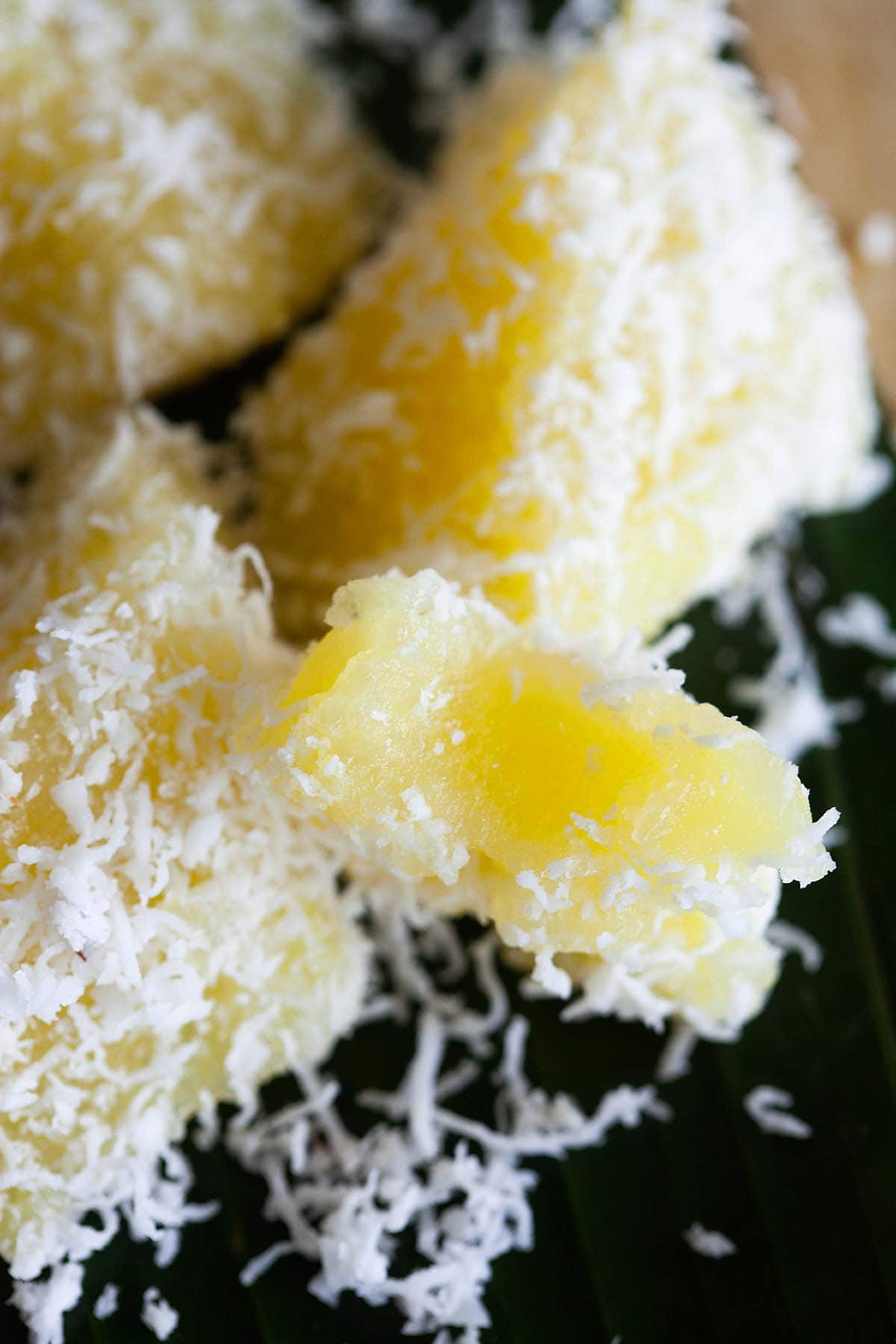
What To Serve With This Recipe
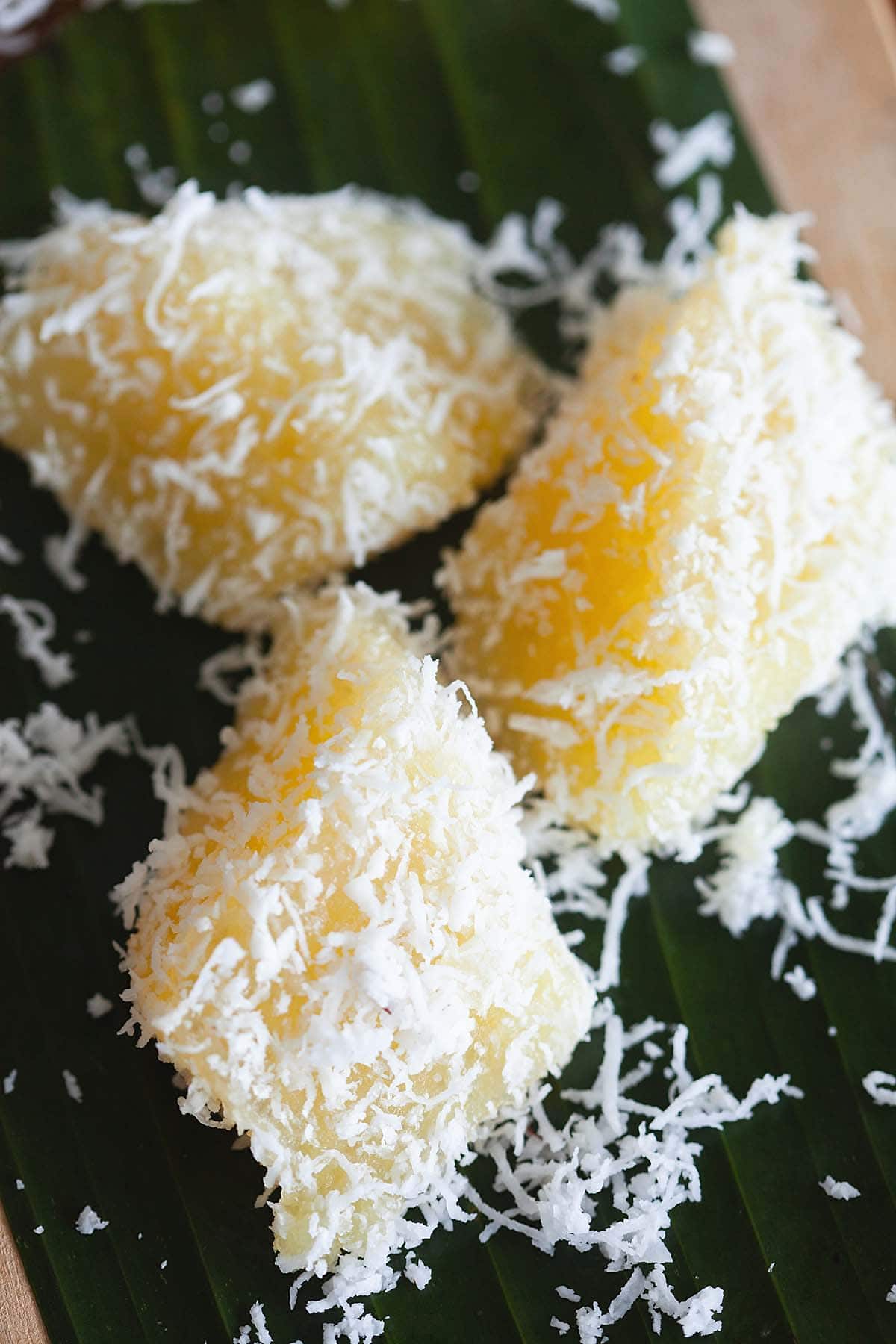
There are many types of kuih in Malaysia. If you wish to try making kuih at home, I recommend the following recipes.
I hope you enjoy this post as much as I do. If you try my recipe, please leave a comment and consider giving it a 5-star rating. For more easy and delicious recipes, explore my Recipe Index, and stay updated by subscribing to my newsletter and following me on Facebook, Pinterest, and Instagram for new updates.
Other Recipes You Might Like
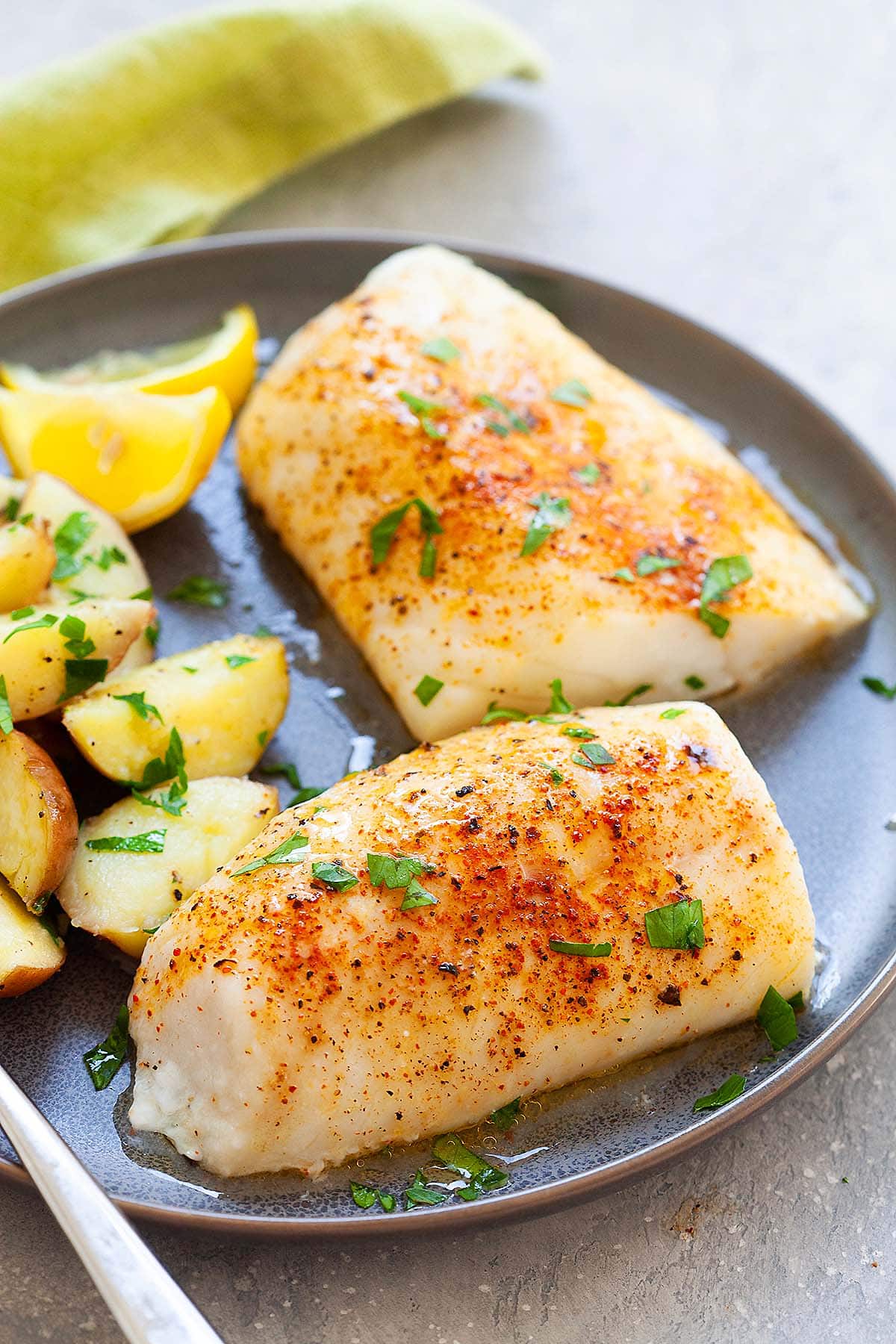
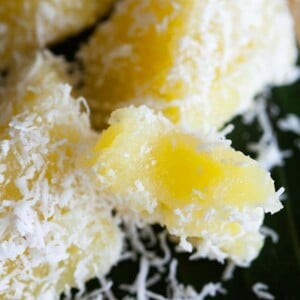
Cassava Cake
Ingredients
- 3.5 oz shredded coconut
- 1/8 teaspoons salt
- 14 oz grated Cassava
- 3 1/2 oz sugar
- 4 1/2 oz coconut milk
- 2 oz water
- 2 tablespoons potato starch
- 1 pinch salt
- 3-4 screwpine, pandan leaves, cut into 4-5″ (10-12 cm) length
- 1 banana leaf, optional
- Water, for boiling
Instructions
- Heat water in a wok or pot large enough to accommodate a 6.5-inch square pan.
- Combine the shredded coconut with 1/8 teaspoon of salt in a stainless steel dish and steam for 3 to 4 minutes. Set aside to cool.
- Use a food processor to blend the grated cassava, sugar, coconut milk, water, potato starch, and a pinch of salt until well combined, about 30 to 45 seconds.
- Pour the mixture into a 6.5-inch (17 cm) square pan and level the top with the back of a spoon. Lay the screwpine leaves flat on top of the mixture. Steam the cassava mixture for 35 to 40 minutes over medium heat.
- Remove the pan from the steaming tray and let it cool completely before cutting. Cut into small squares and toss with the shredded coconut before serving.
- Serve the steamed cassava topped with shredded coconut on a banana leaf, if desired.
Notes
Nutrition
Nutrition information is automatically calculated, so should only be used as an approximation.
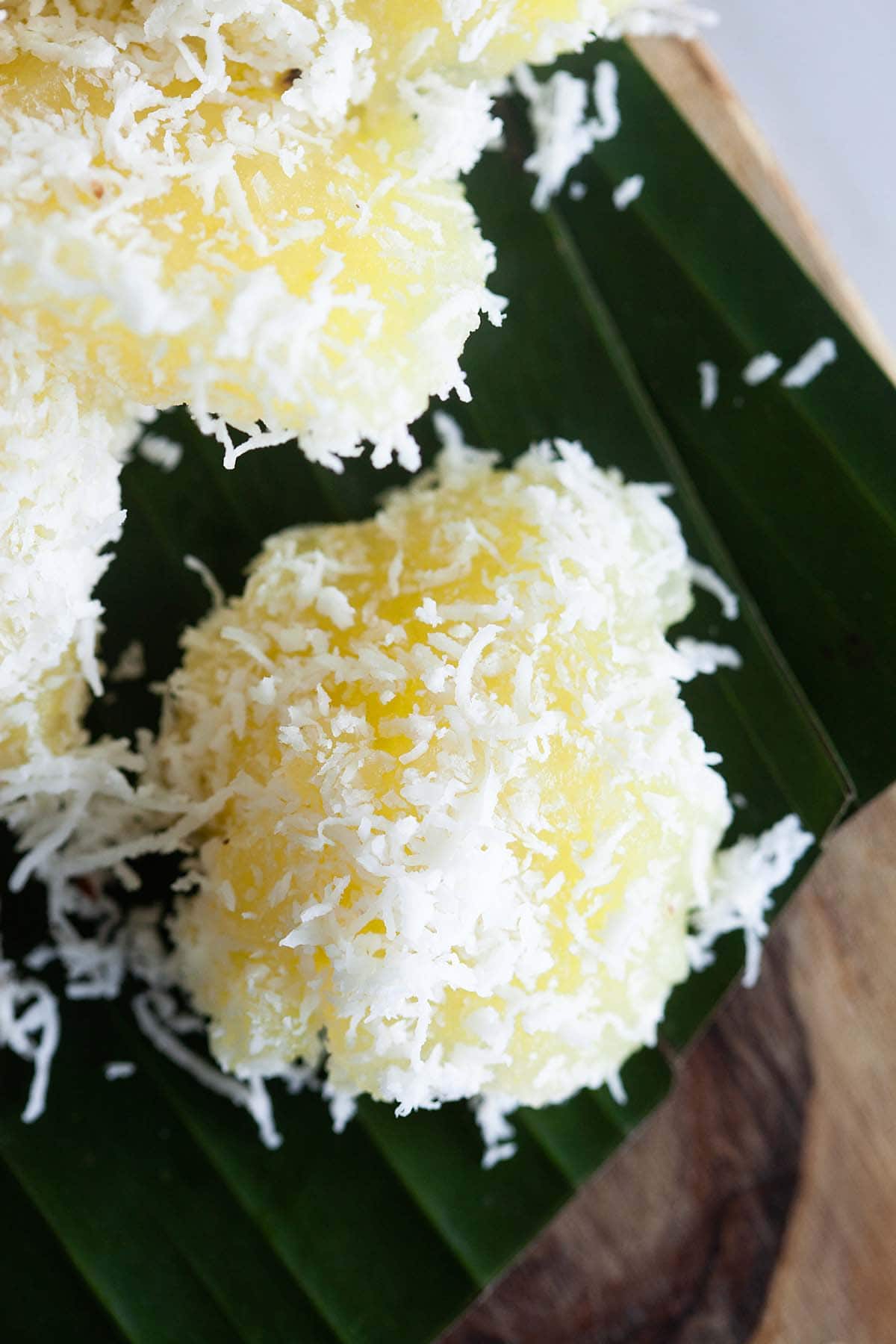
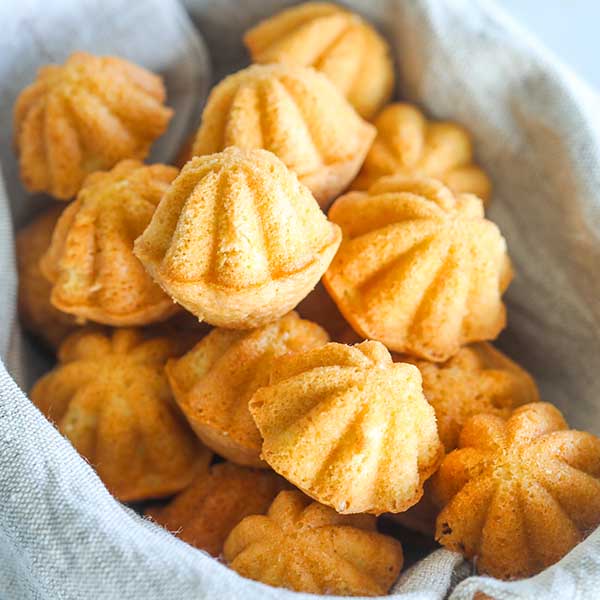
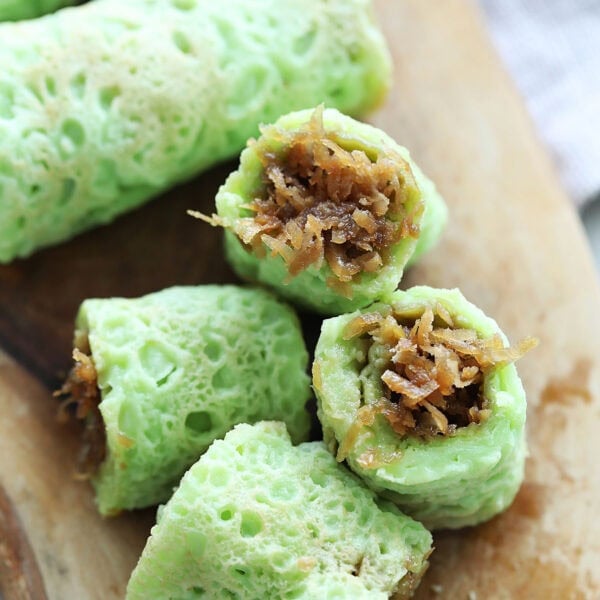
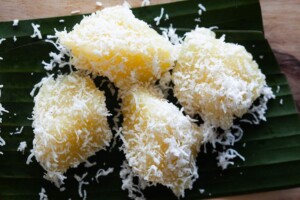






Is the pandan leaves used for flavour only and is removed after steaming?
Yes, for aroma.
Can I substitute the grated cassava with cassava flour?
No.
This recipe is very good and I like the results
Being away from Malaysia, we tried to make it at it at home to fill some of the gaps of missing Malaysian kuihs. It worked out and tasted delicious and also an authentic taste even w/o pandan leaves. Thank you for the recipe, great website
Thanks Krishna.
hello! i just tried this (enjoying a piece now while typing :) didnt have the fresh shredded coconut so i just steamed my dehydrated shredded coconut and it turned out good as well.
I just found your website and I have to make a comment, I’m from Colombia SA, and in Colombia we have an almost identical dessert, its called ENYUCADO, we call cassava “YUCA or YUCCA” its a root commonly used in our home town and mostly the caribbean. The ingredients are almost all the same and even the coconut on top, we use “Panela” instead of sugar, which is the same as sugar in the raw but it comes in block form, its better than sugar for its not too sweet. The similarity of the ingredients of this dessert leaves me to think there must be some connection to the cultures and I would be very interested to find out how this came about. If anyone knows please give me some feedback.
So this is my theory: In the 1500s when Spaniards (and/or Portuguese) were busy occupying every continent in the world, they would take a group of natives from wherever they landed and take these natives to their next destination- like in southeast Asia. Southeast Asians have a lot of things in common, e.g. language/dialect, facial features, built, skin, etc., and yes, food! The country most occupied by Spain in Asia at that time was the Philippines. Spaniards occupied the country for over 300 years – of course, bringing with them the natives from different parts of SA. Many Philippine delicacies are very similar to that of SA, and therefore as family names, and even some traditions and beliefs.
So this is my theory: In the 1500s when Spaniards (and/or Portuguese) were busy occupying every continent in the world, they would take a group of natives from wherever they landed and take these natives to their next destination- like in southeast Asia. Southeast Asians have a lot of things in common, e.g. language/dialect, facial features, built, skin, etc., and yes, food! The country most occupied by Spain in Asia at that time was the Philippines. Spaniards occupied the country for over 300 years – of course, bringing with them the natives from different parts of SA. Many Philippine delicacies are very similar to that of SA, and therefore as family names, and even some traditions and beliefs.
i tired this Singapore and i love it. i have never seen cassava before, how do they look like, can i buy them in Canada. can i substitute with cassava flour. i found this at the grocery in an Asian store
Would like to try this out. Can I substitute potato starch with corn flour ?
Yes.